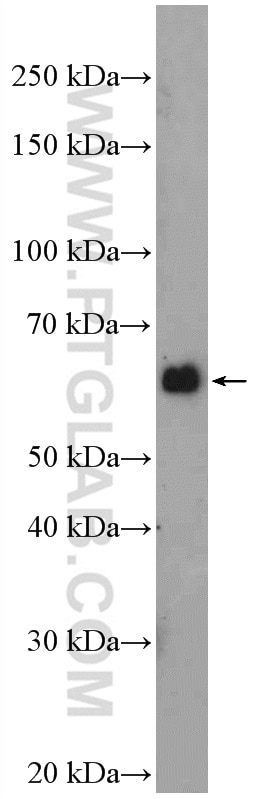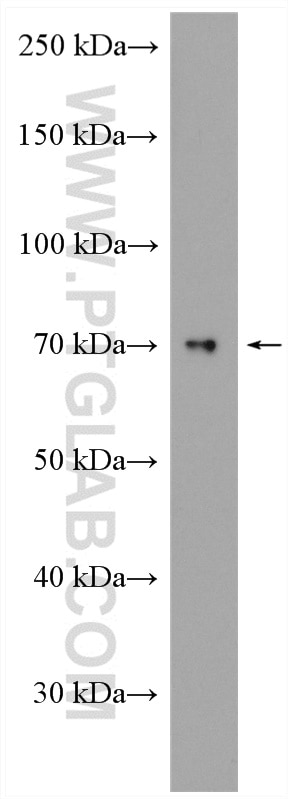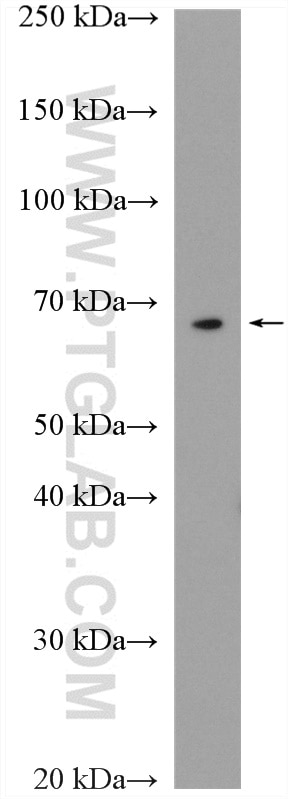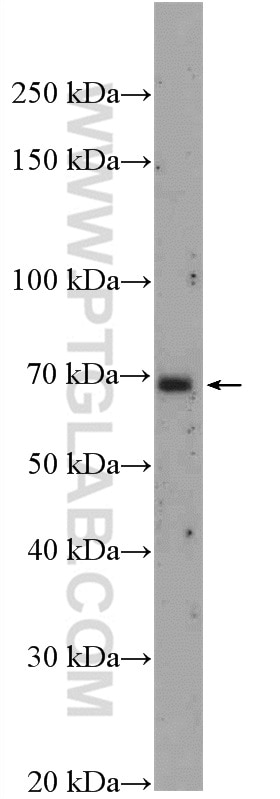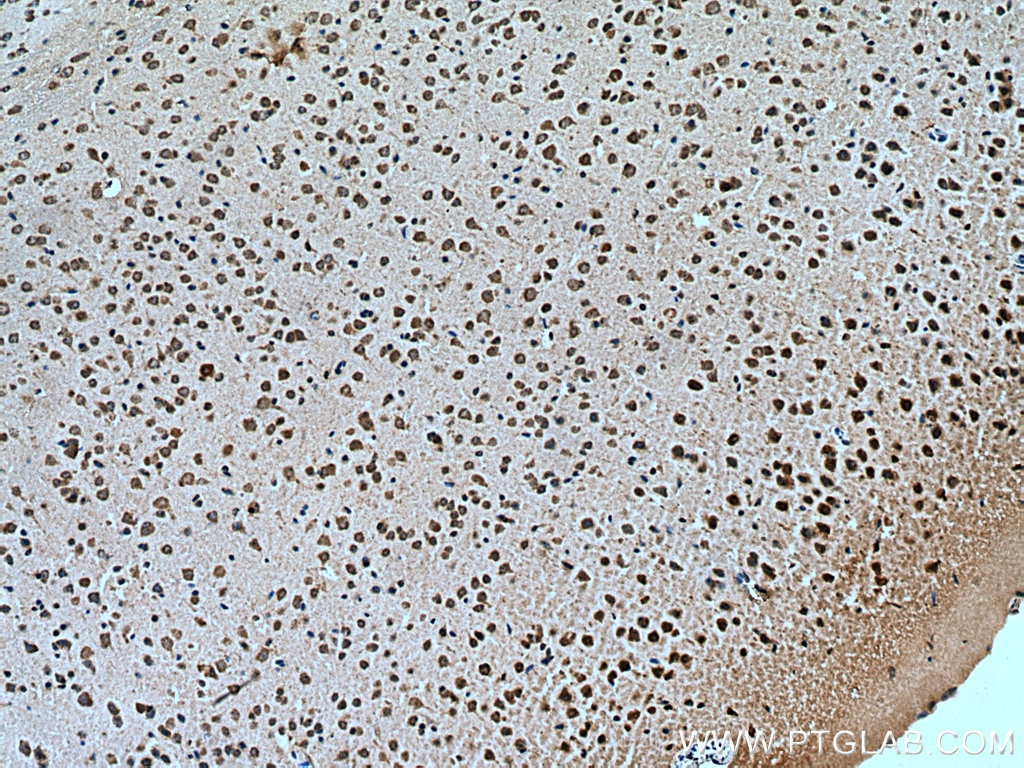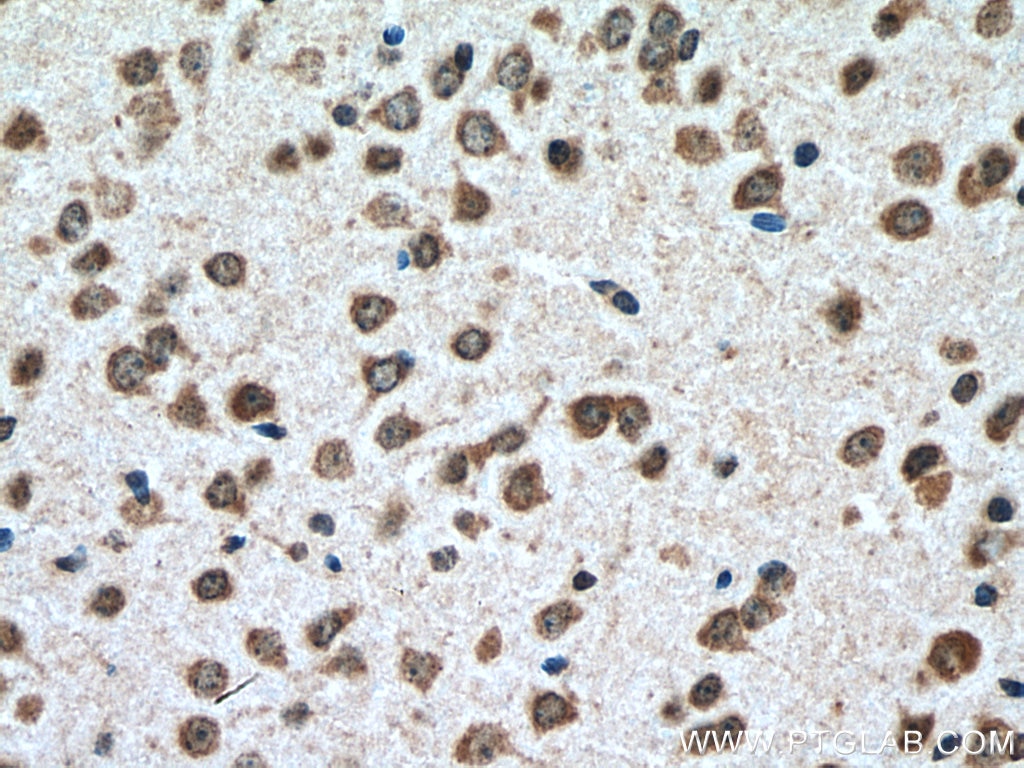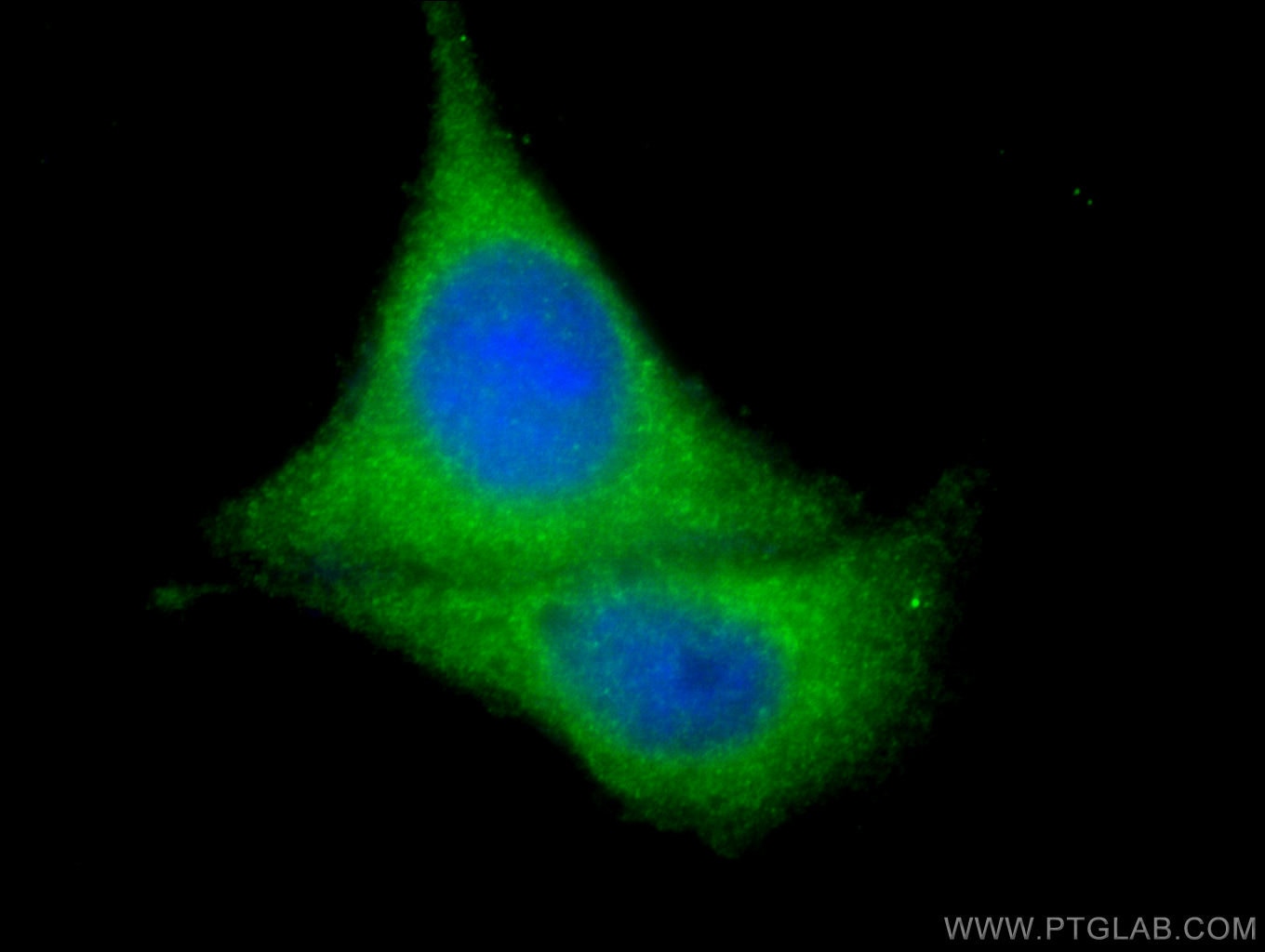Validation Data Gallery
Tested Applications
| Positive WB detected in | HEK-293 cells, A431 cells, mouse brain tissue, NIH/3T3 cells |
| Positive IHC detected in | mouse brain tissue Note: suggested antigen retrieval with TE buffer pH 9.0; (*) Alternatively, antigen retrieval may be performed with citrate buffer pH 6.0 |
| Positive IF/ICC detected in | MCF-7 cells |
Recommended dilution
| Application | Dilution |
|---|---|
| Western Blot (WB) | WB : 1:500-1:1000 |
| Immunohistochemistry (IHC) | IHC : 1:50-1:500 |
| Immunofluorescence (IF)/ICC | IF/ICC : 1:50-1:500 |
| It is recommended that this reagent should be titrated in each testing system to obtain optimal results. | |
| Sample-dependent, Check data in validation data gallery. | |
Published Applications
| KD/KO | See 2 publications below |
| WB | See 35 publications below |
| IF | See 7 publications below |
| IP | See 1 publications below |
Product Information
19491-1-AP targets ATG14/Barkor (N-terminal) in WB, IHC, IF/ICC, IP, ELISA applications and shows reactivity with human, mouse samples.
| Tested Reactivity | human, mouse |
| Cited Reactivity | human, mouse, rat, pig, canine, bovine |
| Host / Isotype | Rabbit / IgG |
| Class | Polyclonal |
| Type | Antibody |
| Immunogen |
Peptide 相同性解析による交差性が予測される生物種 |
| Full Name | KIAA0831 |
| Calculated molecular weight | 55 kDa |
| Observed molecular weight | 65-68 kDa |
| GenBank accession number | NM_014924 |
| Gene Symbol | ATG14 |
| Gene ID (NCBI) | 22863 |
| RRID | AB_10642701 |
| Conjugate | Unconjugated |
| Form | |
| Form | Liquid |
| Purification Method | Antigen affinity purification |
| UNIPROT ID | Q6ZNE5 |
| Storage Buffer | PBS with 0.02% sodium azide and 50% glycerol{{ptg:BufferTemp}}7.3 |
| Storage Conditions | Store at -20°C. Stable for one year after shipment. Aliquoting is unnecessary for -20oC storage. |
Background Information
Barkor, also named as KIAA0831, Atg14 and Atg14L, is required for both basal and inducible autophagy. It plays a role in autophagosome formation and MAP1LC3/LC3 conjugation to phosphatidylethanolamine. Barkor promotes BECN1 translocation from the trans-Golgi network to autophagosomes. This antibody is specific to KIAA0831(Barkor).
Protocols
| Product Specific Protocols | |
|---|---|
| IF protocol for ATG14/Barkor (N-terminal) antibody 19491-1-AP | Download protocol |
| IHC protocol for ATG14/Barkor (N-terminal) antibody 19491-1-AP | Download protocol |
| WB protocol for ATG14/Barkor (N-terminal) antibody 19491-1-AP | Download protocol |
| Standard Protocols | |
|---|---|
| Click here to view our Standard Protocols |
Publications
| Species | Application | Title |
|---|---|---|
Signal Transduct Target Ther Targeting CRL4 suppresses chemoresistant ovarian cancer growth by inducing mitophagy | ||
Adv Sci (Weinh) Bone Marrow Mesenchymal Stem Cell-Derived Dermcidin-Containing Migrasomes enhance LC3-Associated Phagocytosis of Pulmonary Macrophages and Protect against Post-Stroke Pneumonia | ||
Autophagy STYK1 promotes autophagy through enhancing the assembly of autophagy-specific class III phosphatidylinositol 3-kinase complex I. | ||
Dev Cell Autophagic elimination of ribosomes during spermiogenesis provides energy for flagellar motility. | ||
Autophagy Simultaneous inhibition of the ubiquitin-proteasome system and autophagy enhances apoptosis induced by ER stress aggravators in human pancreatic cancer cells. |

